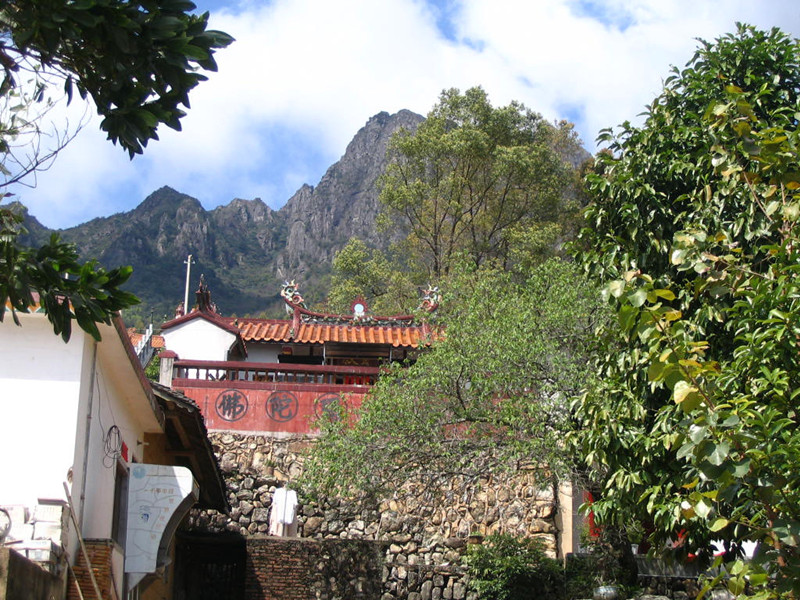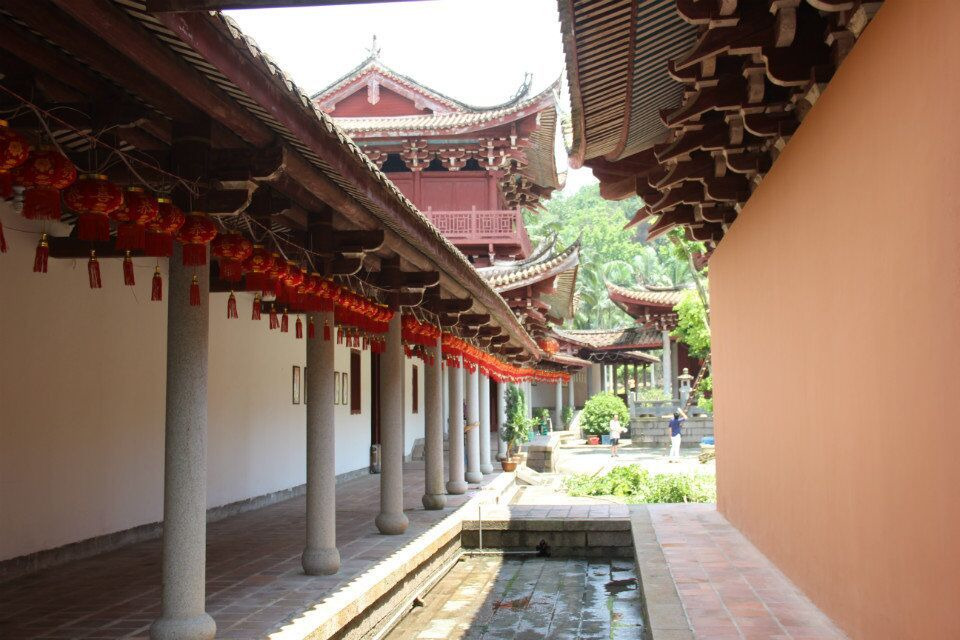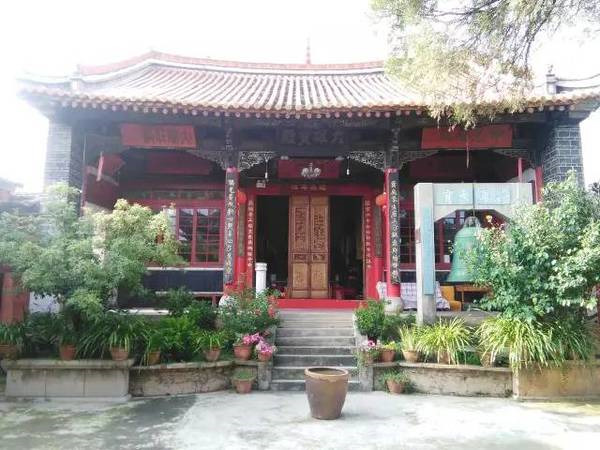Wanfu Temple in Yiliang County, Kunming
Overview
Wanfu Temple (万福寺) is located on Yongjin Mountain (涌金山) in Tangchi Town (汤池镇), Yiliang County (宜良县), Kunming, Yunnan Province. The temple is said to have been named because it housed ten thousand Buddha statues. Its construction date is unknown, but it is one of the eight major temples in Yiliang County and is a key cultural relic protected by the county.
- Chinese Name: 万福寺
- Location: Yongjin Mountain (涌金山), Tangchi Town (汤池镇), Yiliang County (宜良县), Yunnan Province
- Name Origin: The temple is said to have housed ten thousand Buddha statues, which inspired its name.
- Renovation: June 17, 1986
Temple History
Wanfu Temple’s history is rich with cultural significance. The temple’s name is derived from the legend that it once contained statues of ten thousand Buddhas. Its precise construction date remains uncertain.
During the Ming Dynasty (1522-1566), Yang Shen (杨升庵), a scholar exiled to Yunnan, wrote a poem titled Wanfu Temple (《万福寺》), praising the temple:
“The temple overlooks the distant flight of birds, its tower hangs at the end of a rainbow.
The mountains’ green fades into the dark clouds, and boats on the lake are dyed by the cold rain.
Doors and windows are carved into the cliffs, and the rocks form a pavilion.
Cicadas rest peacefully in the twin trees, and picking a flower is difficult for passersby.
The setting sun half-submerges the twilight mist, and the clouds take a different hue at dusk.
At this height, we compose our verses, immortal brushes dip into the waves.”
- Chinese: “寺临飞鸟外,楼出挂虹端。山翠沉云暗,湖舟染雨寒。因阿凿户牖,依石构赞元。双树蝉栖稳,一花人折难。阴霞仍半没,晚霭试横看。攸对登高赋,仙毫点笔澜。”
In 1626, the temple was commemorated with the construction of the Stele for the Construction of the Temple and the Casting of Holy Statues (《建殿宇铸圣像施常住碑引》), which still exists today.
Related Legends
In the Qing Dynasty, local scholars paid homage to the temple. Chen Da (陈达), a famous scholar during the reign of Emperor Jiaqing, composed a poem:
“A mountain entirely of stone, rising straight up like a tower.
The trees at the top protrude from the eaves, and the path winds around the cliffs.
Clouds connect the peaks in the dawn, and the autumn sky is clear above half the lake.
Sitting by chance in the long corridor, the temple feels even more secluded with the monks.”
- Chinese: “一山都是石,直上似登楼。树杪檐层出,岩端路曲周。云连千嶂晓,天朗半湖秋。偶入长廊坐,僧贫院更幽。”
In March 1834, a major earthquake struck the area, causing the temple’s theater stage to collapse, killing performers and damaging the temple. It was later repaired in the early Xianfeng period. In 1908, a request was submitted to ban the “March 3rd” opera performances during the temple fair, and a stone stele was erected to enforce the ban.
Peak Period
In 1920, the tradition of welcoming the Buddha and holding opera performances during the temple fair was revived. Thousands of people from neighboring counties attended, making it a vibrant event. In 1931, Yuan Jiagu (袁嘉谷), the top scholar during the late Qing Dynasty, visited the temple and inscribed a stele with the words “Supreme Enlightenment” (无上菩提), which was later carved and erected by a local man named Li Jingshi (李荆石).
Layout and Structure
As of the temple’s prime, it included a Mountain Gate, Heavenly Kings Hall, Guanyin Hall, Dizang Hall, and the Main Hall—all centered around five courtyards. The temple also had a Tuzu Hall (土主殿), a Theater Stage (戏台), and a Sea-Viewing Tower (望海楼). There were hundreds of copper Buddha statues, as well as a large bell, drum, and wooden fish used in ceremonies. Generous donations from followers contributed to the temple’s landholdings, known locally as “monk’s land” (和尚田).
In 1945, the temple grounds were repurposed for the Minghu Middle School. In 1950, the “March 3rd” temple fair was discontinued, and the temple was used by the Tangchi Elementary School.
Decline and Closure
In 1955, as part of collective efforts, the temple became the site of an ironworks factory, leading to the destruction of several parts of the temple. In 1958, the temple was repurposed again for Yiliang Fourth Middle School, and later for Tangchi Elementary School until the 1970s. The temple was eventually closed due to safety concerns, though cultural relics such as Neolithic artifacts were discovered on Yongjin Mountain, including red pottery fragments, carbonized grains, and shell mounds.
Buddhist Activities
On June 17, 1986, the temple was approved for renovation by the Yunnan Branch of the China Buddhist Association, with support from various levels of government. The temple was restored and reopened as a center for Buddhist activities.
Cultural Preservation
In July 1987, Wanfu Temple was listed as a key cultural relic protection unit by the county government.
Folk Festivals
In 1863, the descendants of the Hong Family (洪氏) erected the Tomb of Lady Hong (《洪氏圣母坟》) in the temple grounds. The “March 3rd” Temple Fair resumed and continues to be held annually, drawing over 50,000 participants, contributing significantly to the local economy and culture.
Restoration and Development
In 1991, the Yiliang County Government approved Wanfu Temple as an open temple. Subsequent investments led to the reconstruction of the Mountain Gate, Fortune Hall, and Theater Stage. Famous inscriptions such as “Yongjin Park” (涌金公园) and “Gathering Wealth” (聚金源) were added by notable individuals.
Notable Events:
- In 1993, Zhang Jingru (张景儒), a Chinese national residing in Myanmar, donated a jade Buddha statue to the temple.
- In 1996, a new copper bell was cast for the temple, standing 1.9 meters tall and weighing 1.4 tons.
Publications:
In 1998, a local former county governor, Na Kaigui (那开贵), compiled and published The Stories of Tangchi (《汤池民间故事–粗糠宝》), with financial support from various contributors.
Land Area
- The temple covers 21,071.9 m² of land on Yongjin Mountain.
- The temple also includes a pickle factory site of 1,094.7 m² and a parking lot of 909.84 m².
- The highest elevation of the temple is 1,813 meters.




















